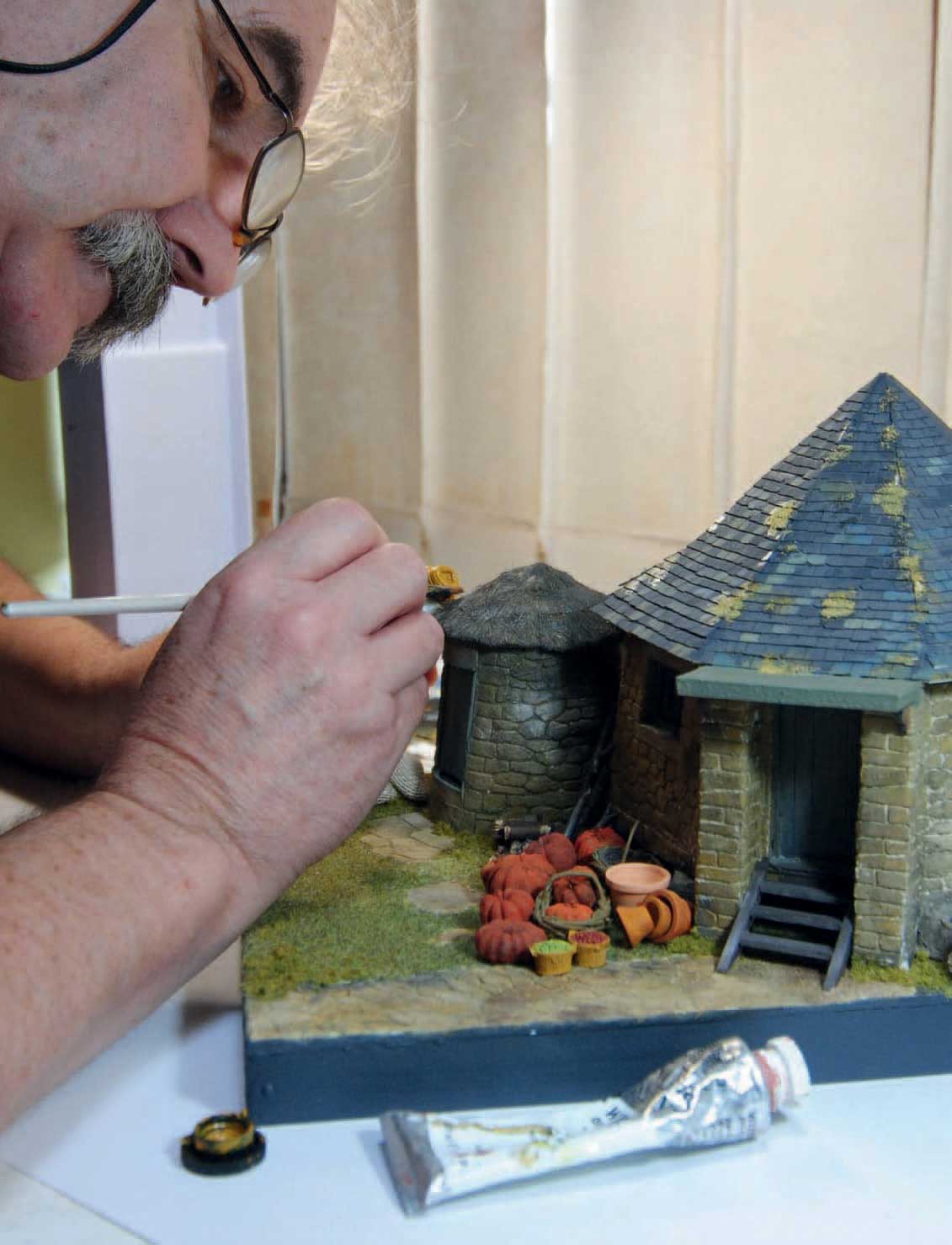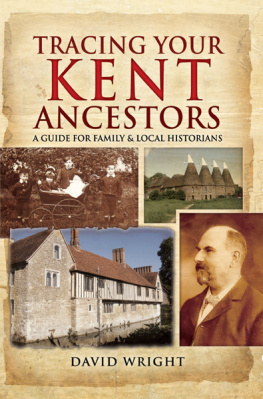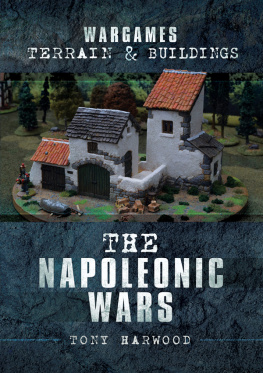Page List
MODELLING
HISTORIC BUILDINGS AND
IMAGINARY STRUCTURES
A Guide for Railway Modellers and Diorama Model Makers


First published in 2021 by
The Crowood Press Ltd
Ramsbury, Marlborough
Wiltshire SN8 2HR
www.crowood.com
This e-book first published in 2020
David Wright 2021
All rights reserved. This e-book is copyright material and must not be copied, reproduced, transferred, distributed, leased, licensed or publicly performed or used in any way except as specifically permitted in writing by the publishers, as allowed under the terms and conditions under which it was purchased or as strictly permitted by applicable copyright law. Any unauthorised distribution or use of this text may be a direct infringement of the authors and publishers rights, and those responsible may be liable in law accordingly.
British Library Cataloguing-in-Publication Data
A catalogue record for this book is available from the British Library.
ISBN 978 1 78500 805 4
DEDICATION
I would like to dedicate this, my seventh book, to a special group of people: the exhibition managers and their many helpers. This dedicated group has devoted so much of their own time and effort, for free, to stage the model railway, and other miniature-related exhibitions.
ACKNOWLEDGEMENTS
Also I would like to pass on my special thanks to the following: Kate Murphy of Sinai Park House; Leslie Smith and Gareth Williams of Tutbury Castle; Caroline Talbot of Hawkstone Park Follies; Trevor Middleton and Charlie Glenn of Codnor Castle Heritage Trust; and my wife Karen. I thank all of them for their contributions towards the production of this book.
INTRODUCTION
In this, the seventh book I have put together for Crowood, I have purposely tried to present the contents in a way that I hope will fire the modellers imagination, rather than following exacting constraints. This will be especially evident for the model railway hobby, where for the most part modellers are trying to recreate a prototype as closely as possible down to the very last detail.
This desire for miniature perfection is especially true of the older modeller, who might be trying to create in model form what they remember from childhood. Others will try to create a three-dimensional miniature record of times before they were born, when the railways were at their peak.
These modellers will have to rely on historical records and photographs in order first to gain reference before creating their models. They would most likely have experienced the real railway when steam was king, and the railways were thought to be more attractive. This was most probably made more interesting because of the railway infrastructure evident at this time. The result of this has seen the model railway market catering for the older railway modeller, especially in recent years.
The model railway trade has therefore seen the creation of ready-to-run locomotives and rolling stock to appeal to most tastes, from pre-grouping up to the diesel era. If it is not available now out of the box, then there is probably a kit available, and there are many extra detailing parts for either the scratch builder or those who want to super detail their out-of-the-box models.
All these modellers were young in a world that was very different to the one we live in today. Life was simpler, I suppose, and for any young boy in the 1950s trainspotting and fishing were the main pastimes for this young generation. This was also true of the next generation growing up in the 1960s and 1970s, although steam had given way to diesel by this time, and popular music was, of course, a big influence on the young.
However, the modern world of today has changed dramatically, especially with the ever-growing advances in technology. The young of today are bombarded with immediate communications, instant gaming, and a vast number of images readily available at a touch of the screen on a smartphone, tablet or laptop computer. The younger generation have therefore mainly turned their back on any creative hands-on hobbies and pastimes, which tend to be considered as not being cool any more!
This is a shame, as we need new blood to move the hobby on for the future, otherwise we will see it disappear completely. This has concerns for me, as we need to be creative with both our hands and our minds. Model making is one of the best ways to keep these skills alive. This is why I have constructed this book in a way that I hope will appeal to the younger generation as well as older modellers.
As youngsters we always have a vivid imagination, although as we grow older, for most of us the responsibilities of life start to take over, and imagination becomes lost to reality. I remember my childhood vividly, in particular not being able to look over a high wall and wondering what lay beyond. My imagination would kick in, leading me into a fantasy world that might be lying on the other side.
This imagination has stayed with some into adulthood, and these few have used it creatively to produce great works of fiction and music, as well as visually towards creating unbelievable concept art for film productions. It is this imagination I want to bring to the fore in this book, and I hope it will perhaps inspire some of the younger generation to get hands on again.
The castle has always evoked interest in the young mind; this is most likely to have been obtained from imagery seen in films or childhood story books. This has possibly led to an interest carried forward to explore the real structures. This interest has recently expanded amongst some teenagers, and has developed into the three-dimensional gaming hobby. Of course this is for the most part hinged totally on fantasy, so castles will be playing a major part. When looking at this hobby in more detail I have noticed the skills involved, and some of the materials used are not dissimilar to those of the model railway hobby and yet they seem to be totally alienated from each other.

This super model diorama was constructed by the late Ray Williams of Belper, Derbyshire; it is now owned by John Huddlestone. The model is called Combourge, and features a fine trolley-bus layout. It is totally scratch built, using a combination of wood, styrene sheet and modelling plaster. All the stonework is hand painted and is superbly detailed and dressed out. The castle and the various shops and cottages represent the architecture of the Brittany region of France. For those interested in the trolley buses operated on the layout, they represent the following systems: Saint Maio, Limoges, Grenoble and St tienne.
I have therefore purposely used projects in this book that would be both attractive and in some cases recognizable to both sets of model makers; this I hope will bring the creative skills of future modellers together. One major project will be themed in this way, combining the model railway with an imaginary or fantasy setting.
We can also combine structures such as castles and follies with reality when it comes to railway modelling. I can think of a few examples where castles feature directly or close to the railway. Conwy, for instance, immediately comes to mind, along with Corfe Castle on the Swanage branch. Knaresborough is also a good example, with the railway passing close to the ruins of the fourteenth-century castle. This has been modelled by Pete Goss in his incredible exhibition layout The Worlds End. The folly features on a few exhibition layouts too, such as Weaver Hill by Benjamin & Richard Brady, where a number have been incorporated within the scenic part of the layout.






















